The first thing we did after moving in to our new homestead was start planting.
Fortunately, there were some beds here already, filled with soil and just waiting to burst into new life:
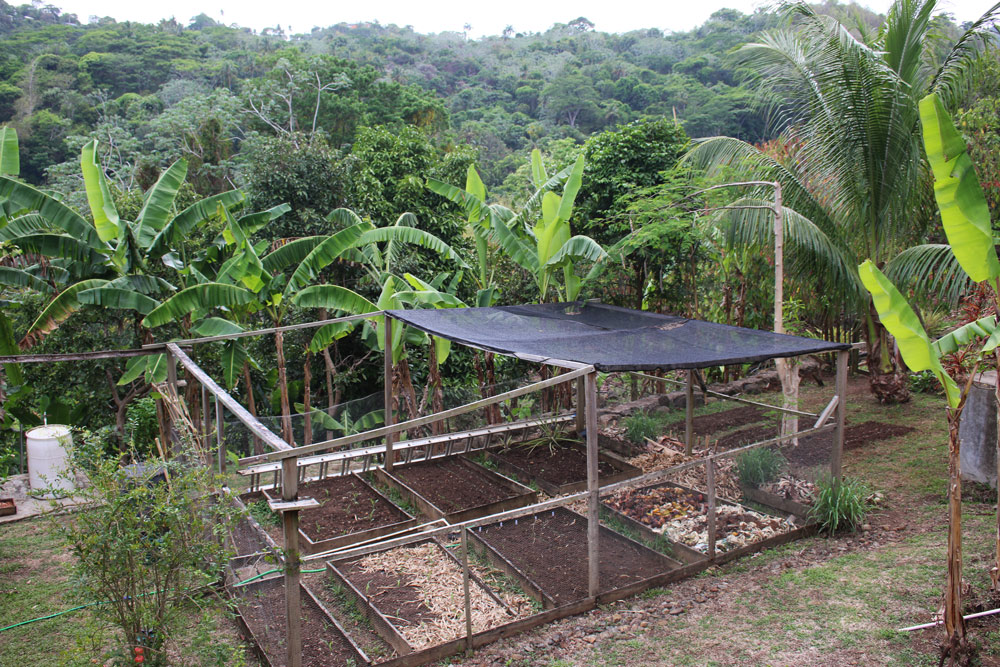
The bed in the foreground to the far right, filled up with random stuff, is our new compost pile. I always rotate compost piles right through my garden areas as described in my book Compost Everything: The Good Guide to Extreme Composting. It makes a lot of sense. Fertility stays right where I’m going to be growing next year’s crop, plus the resulting compost is easily accessible for my other beds. I can even get fancy and pile a little dirt in the middle to plant squash or melons if I feel like it. For now, we’re filling the compost pile with everything from newspapers to cocoa pods, mango peels to sea urchin shells. It’s going to be some fantastically rich material.
In order to feed the vegetables as they emerge from the ground, I also create a barrel of fermenting cow manure/nitrogen-fixer tea I can pour down the rows with a watering can (this is another trick from my book that allows you to stretch a limited amount of material across a large area before your compost piles get established).
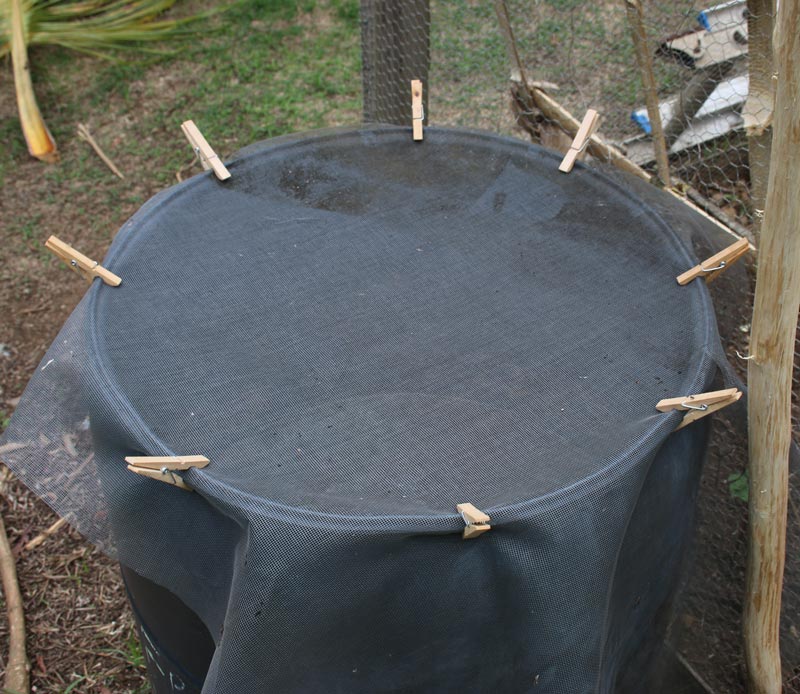
I made sure to cover the standing water to keep mosquitoes from breeding, then possibly infecting us with Zika (which somewhat of a risk here and there across the region), dengue fever, malaria, Chikungunya or some other horrible tropical disease.
Behind the main garden beds I dug three more around the base of an established moringa tree, making sure to angle them against the slope so as to block erosion during the rainy season:
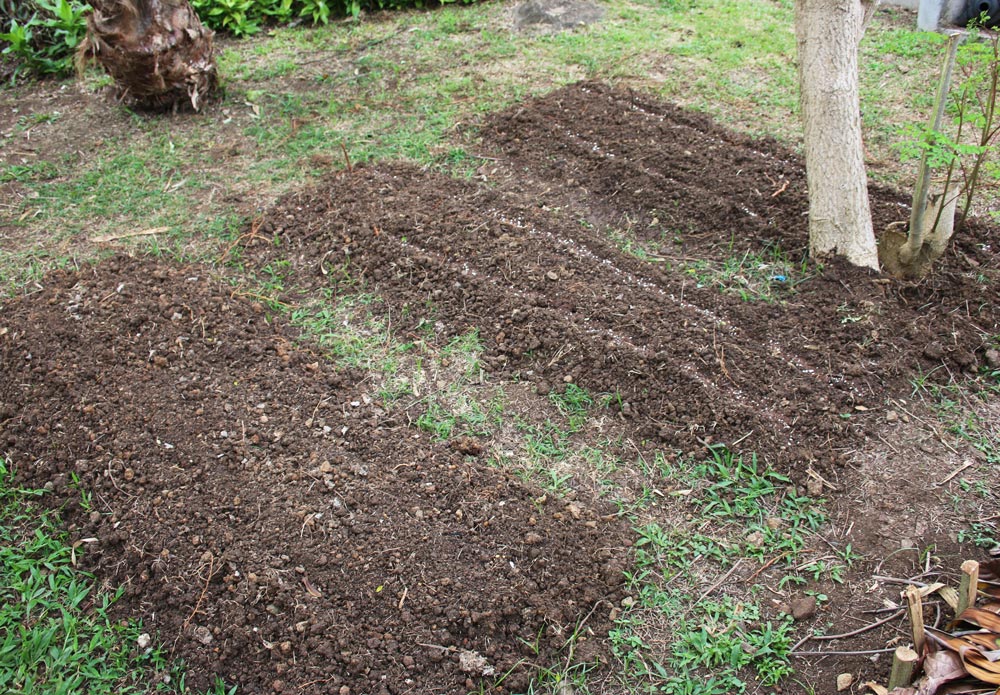
We just planted these with cabbages, hot peppers and more cabbages.
I like cabbages. They make me plant them every year.
We have bamboo growing down the hill by the river, so I took some to make a trellis for some climbing purple-podded Roma beans we brought from the United States:
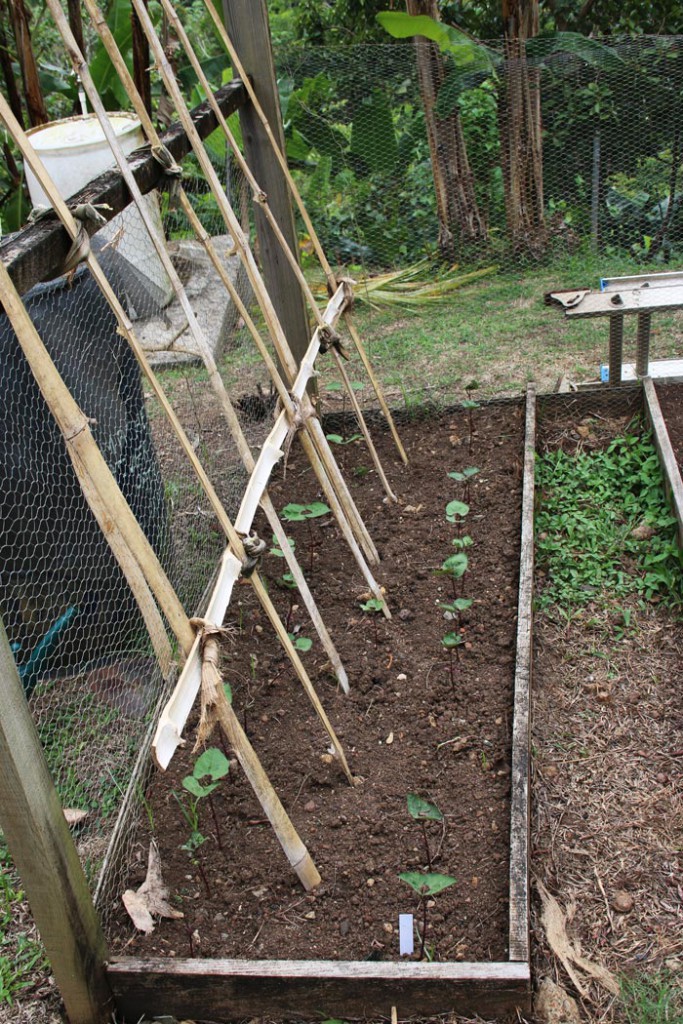
I love the purple stems on the beans.
Finally, I had to dig some of my melon pits (you can see me create a ridiculous melon pit in the Compost Everything movie) and plant some Seminole Pumpkins:
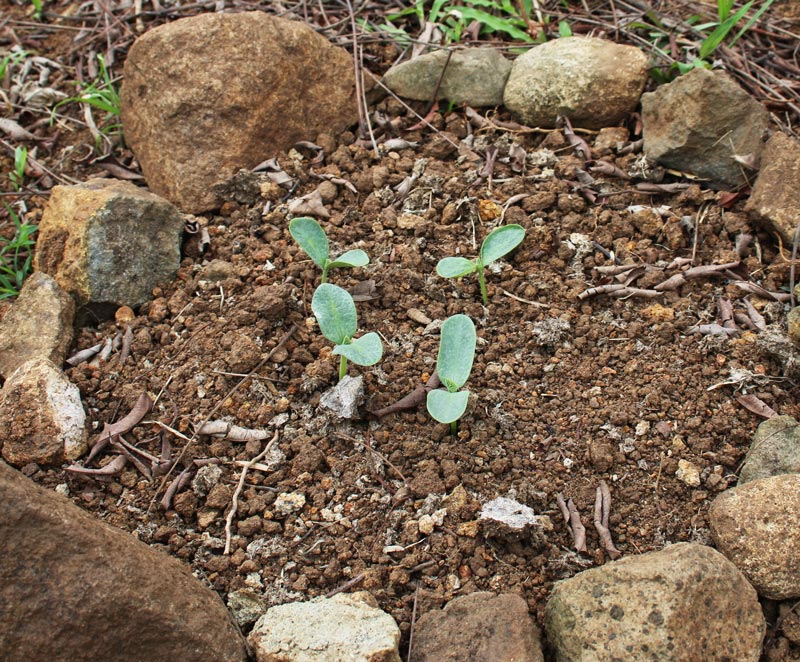
I’ll bet they’re the first Seminole pumpkins in the country. Wouldn’t that be cool?
Thus far we’ve also planted pimento peppers, bell peppers, Scotch bonnet peppers, tomatoes, beets, spinach, carrots, bush beans, cassava, watermelons, sweet potatoes, yams, pigeon peas and Missouri corn cob pipe corn.
I can’t wait to see how everything grows in this very different climate. We can plant basically year round since we’re on the mountainside and the weather never gets too hot or too cold. The only limitation is rainfall – and we can overcome that with irrigation.
I’ll post more photos as the gardens grow and mature.


14 comments
I am happy for you and your family.
I am wondering about the soil fertility. How does it compare to the sand in Florida? You mentioned being on a mountain side. Do you have volcanic soil? It is my understanding that would be good. I have no personal experience with that so I have no idea really. Are you going to use any seaweed or sea water on your garden to go along with the urchins? Lots of possibilities.
Keith
Thank you, Keith. Definitely going to get some seaweed into the garden. I think it’s better than manure. The soil is volcanic with a lot of clay in it. Very high in minerals – I think my teeth are getting better already.
I’m really looking forward to see how you work your irrigation. Your location looks just a bit Jurassic. Has any of the wild life come to say “Hello”? I’m at the other end of the country, located in the shadow of the Olympic Rain Forest but I “don’t” get the rain people think we do. I harvest my rain water and my rainfall collection this year is much lower than last year with a state declared drought. Everything I’ve done over the last 8 years is to build soil & hold water. With the lower rain fall I’m packing in extra compost, raising my soil level 1 foot overall and creating berms on top of old berms. I too harvest from the sea. If you get driftwood that makes wonderful raised bed building materials. Beneficials love making it their home. I collect a lot of other things off the beach, rope, floats, timber from docks and stuff that fell off boats.
Will there be a post about the move to your new location and how that came to be?
Probably at some point. We’ve actually been working on expatriating for over a decade – it just took a lot of work to hit escape velocity.
Looks amazing and exciting! I would like to see and hear more about the cacao, how it grows, how you harvest, etc.
My first batch is looking pretty bad now. Once I work it out I’ll post a “how-to.”
I think you have all the regular readers wondering how you made the decision to make the move, the logistics behind it and of course the secret location. Obviously we’re all jealous that we haven’t done the same thing and taken such a bold leap into the unknown!
I highly recommend it. It’s a good kind of terrifying.
As for the main reason: I don’t think the USA is going to improve over the next few decades. The debt load alone is scary… and I’m rather tired of prepping. Mostly, I just wanted to go somewhere less crazy to raise my family and do research with tropical crops.
I love it! Following your adventure with envy!
What a surprise to find you had left the country. I had no internet for many weeks so this is great news. What is your temp range? How much rain and when? Do you have public water also? I understand about keeping your location private. It was many years before I was willing to give my location, or even the country. Living in the tropics is a whole new head. My climate is dry so it limits heavy water use crops. We grow a lot of trees food for us and the animals. Amaranth was my big new success this year. Leafy greens and seeds for everyone, us and animals. Leafy greens are a problem with temps in the 70s an night this time of year. Asparagus is growing well. Still too young to harvest. We grow most of our own food, feed, and meat. The cost of living is low. I wish you well in you new adventure. Bless you all.
So do you officially own the property? Are you renting, leasing, what?
I’d be very interested in buying some property, but I don’t know how I feel about leasing or renting.
Watch for day length problems with some sensitive crops… Corn can be one, onions of course and many times cauliflower and broccoli not sure about cabbage.
Congratulations David for your move for the views are you more closer to us here in Venezuela, its like a caribean island, what a surprise for me, I dont had internet during few months, good luck for you and your family.
Your friend,
Octavio
Comments are closed.